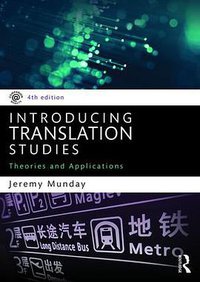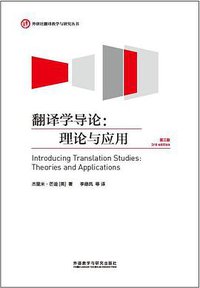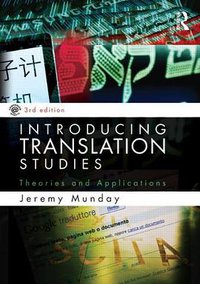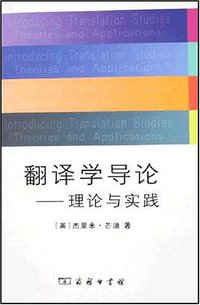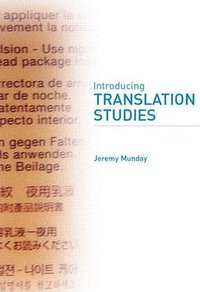翻译研究入门
Douban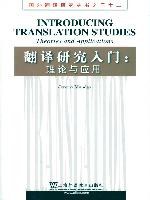
理论与应用
杰里米·蒙代(Jeremy Munday)
visão geral
《翻译研究入门:理论与应用》系统介绍了古罗马以来的翻译理论流派与思潮,精心绘制了一幅西方译学研究的进程图,全面展现了本领域最新的学术成果及研究动向。与同类著述相比,《翻译研究入门——理论与应用》具有如下鲜明的特点和独特的价值:强调理论之间的内在联系,体现翻译学的系统性;注重理论与实际相结合,突出翻译学的实证性;鼓励进行独立思考与研究,追求翻译学的创新性,等等。
作为翻译学的入门教程,《翻译研究入门——理论与应用》以通俗易懂的语言对西方翻译学的产生、发展和壮大进行了梳理,为学生、教师、研究者及翻译人员等开启了当代西方译学研究的新天地。
contents
List of figures and tables Acknowledgements List of abbreviations IntroductionI Main issues of translation studies 1.1 The concept of translation 1.2 What is translation studies? 1.3 A brief history of the discipline 1.4 The Holmes/Toury 'map' 1.5 Developments since the 1970s 1.6 Aim of this book and a guide to chapters2 Translation theory before the twentieth century 2.0 Introduction 2.1 'Word-for-word' or 'sense-for-sense'? 2.2 Martin Luther 2.3 Faithfulness, spirit and truth 2.4 Early attempts at systematic translation theory: Dryden, Dolet and Tytler 2.5 Schleiermacher and the valorization of the foreign 2.6 Translation theory of the nineteenth and early twentieth centuries in Britain 2.7 Towards contemporary translation theory3 Equivalence and equivalent effect 3.0 Introduction 3.1 Roman Jakobson: the nature of linguistic meaning and equivalence 3.2 Nida and 'the science of translating' 3.3 Newmark: semantic and communicative translation 3.4 Koller: Korrespondenz and Aquivalenz 3.5 Later developments in equivalence4 The translation shift approach 4.0 Introduction 4.1 Vinay and Darbelnet's model 4.2 Catford and translation 'shifts' 4.3 Czech writing on translation shifts 4.4 Van Leuven-Zwart's comparative-descriptive model of translation shifts5 Functional theories of translation 5.0 Introduction 5.1 Text type 5.2 Translational action 5.3 Skopos theory 5.4 Translation-oriented text analysis6 Discourse and register analysis approaches 6.0 Introduction 6.1 The Hallidayan model of language and discourse 6.2 House's model of translation quality assessment 6.3 Baker's text and pragmatic level analysis: a coursebook for translators 6.4 Hatim and Mason: the semiotic level of context and discourse 6.5 Criticisms of discourse and register analysis approaches to translation7 Systems theories 7.0 Introduction 7.1 Polysystem theory 7.2 Toury and descriptive translation studies 7.3 Chesterman's translation norms 7.4 Other models of descriptive translation studies: Lambert and van Gorp and the Manipulation School8 Varieties of Cultural studies 8.0 Introduction 8.1 Translation as rewriting 8.2 Translation and gender 8.3 Postcolonial translation theory 8.4 The ideologies of the theorists 9 Translatingtheforeign:the(in)visibilityoftranslation 9.0 Introduction 9.1 Venuti: the cultural and political agenda of translation 9.2 Literary translators' accounts of their work 9.3 The power network of the publishing industry 9.4 Discussion of Venuti's work 9.5 The reception and reviewing of translationsI0 Philosophical theories of translation 10.0 Introduction 10.1 Steiner's hermeneutic motion 10.2 Ezra Pound and the energy of language 10.3 The task of the translator: Walter Benjamin 10.4 Deconstruction11 Translation studies as an interdiscipline 11.0 Introduction 11.1 Discipline, interdiscipline or sub-discipline? 11.2 Mary Snell-Hornby's 'integrated approach' 11.3 Interdisciplinary approaches 11.4 The future: co-operation or fragmentation? Appendix: internet links Notes Bibliography Index
